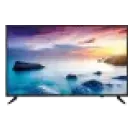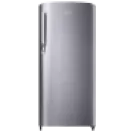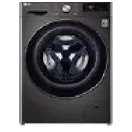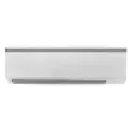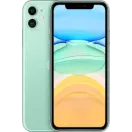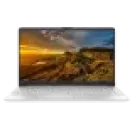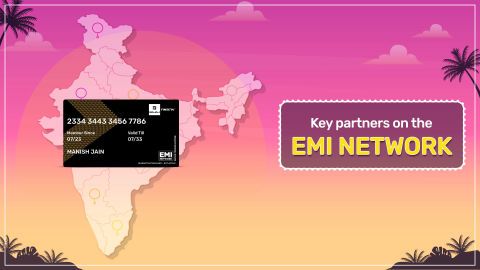For those interested in flexible payment options, you can check out the available TVs on Bajaj Mall. Enjoy the convenience of selecting your preferred television and paying for it in Easy EMIs. Simply head to any of Bajaj Finserv’s 1.5 lakh partner stores across 4,000 cities in India to discover a wide selection of products.
3 min
07-Nov-2024
Cable TV and broadcast TV are two distinct methods of delivering television content, each with its own unique advantages. Cable TV transmits its signal through coaxial or fibre-optic cables directly to subscribers, offering an extensive range of channels, including premium and specialized networks, and often providing additional services like on-demand programming and DVR capabilities. In contrast, broadcast TV uses radio waves to send signals from local television stations to antennas, allowing viewers to access major networks and local programming for free, without a subscription. While cable TV is known for its expansive channel selection and additional features, broadcast TV remains a more accessible and cost-effective option, particularly for those seeking local news and events.
For those interested in flexible payment options, you can check out the available TVs on Bajaj Mall. Enjoy the convenience of selecting your preferred television and paying for it in Easy EMIs. Simply head to any of Bajaj Finserv’s 1.5 lakh partner stores across 4,000 cities in India to discover a wide selection of products.
For those interested in flexible payment options, you can check out the available TVs on Bajaj Mall. Enjoy the convenience of selecting your preferred television and paying for it in Easy EMIs. Simply head to any of Bajaj Finserv’s 1.5 lakh partner stores across 4,000 cities in India to discover a wide selection of products.
Overview of broadcast TV and cable TV
Broadcast television (TV) and cable TV are two primary modes of television transmission, each catering to different audience needs and preferences. Broadcast TV delivers content over the airwaves through antennas and is free to viewers, making it widely accessible. This service typically offers a selection of local channels, which may include major networks. On the other hand, cable TV transmits content through coaxial or fibre-optic cables, requiring a subscription fee for access. Cable TV usually provides a broader range of channels, including premium and specialised content, appealing to viewers who desire more diverse programming options. With the advent of digital technology, both formats have evolved, enhancing picture quality and expanding content availability.
For budget-friendly options, check out the 32-inch smart TV under Rs. 20,000.
Next, consider the type of content you value most. Broadcast TV provides access to major networks and local channels, perfect for viewers who prioritise news and local programming. Conversely, if you are interested in premium shows, movies, or sports, cable TV is likely to fulfil your needs better, as it offers specialised channels and often exclusive content.
Picture quality is another essential factor. If you live in an area with strong reception, broadcast TV can provide excellent quality. However, cable TV guarantees superior picture and sound quality, especially for those who have high-definition (HD) televisions. Finally, think about accessibility: broadcast TV is simple to set up with just an antenna, while cable requires additional equipment and a service contract.
Your choice will depend on your specific needs, including budget, content preferences, and quality expectations. If you desire a more modern viewing experience, explore options like touch screen TVs that can enhance your entertainment experience.
Key differences in service and quality
- Cost: Broadcast TV is free, while cable TV requires a monthly subscription, often resulting in higher overall costs for viewers.
- Channel variety: Cable TV typically offers a much larger selection of channels, including premium options, while broadcast TV is limited to local and national networks.
- Picture quality: Cable TV often provides better picture and sound quality due to its digital transmission, whereas broadcast quality can vary based on signal strength and location.
- Accessibility: Broadcast TV can be accessed without the need for a subscription or additional equipment, while cable TV requires a cable box or a similar device.
- Programming: Cable TV channels often feature exclusive content and live events, whereas broadcast TV usually focuses on popular shows and local news.
Features of broadcast TV vs cable TV
| Feature | Broadcast TV | Cable TV |
| Cost | Free | Subscription-based |
| Channel variety | Limited local and national channels | Extensive channel options |
| Picture quality | Varies (dependent on signal) | Higher quality |
| Accessibility | Requires only an antenna | Requires cable subscription |
| Programming | Primarily local shows and news | Exclusive content and live events |
For budget-friendly options, check out the 32-inch smart TV under Rs. 20,000.
Choosing between broadcast TV and cable TV: What to consider
When deciding between broadcast TV and cable TV, several factors warrant careful consideration to ensure you select the service that best fits your viewing habits and preferences. First, assess your budget: if cost is a primary concern, broadcast TV may be the ideal option as it offers a range of channels without any subscription fees. However, if you are a dedicated viewer who enjoys a diverse array of programming, cable TV might be more appealing despite the associated costs.Next, consider the type of content you value most. Broadcast TV provides access to major networks and local channels, perfect for viewers who prioritise news and local programming. Conversely, if you are interested in premium shows, movies, or sports, cable TV is likely to fulfil your needs better, as it offers specialised channels and often exclusive content.
Picture quality is another essential factor. If you live in an area with strong reception, broadcast TV can provide excellent quality. However, cable TV guarantees superior picture and sound quality, especially for those who have high-definition (HD) televisions. Finally, think about accessibility: broadcast TV is simple to set up with just an antenna, while cable requires additional equipment and a service contract.
Your choice will depend on your specific needs, including budget, content preferences, and quality expectations. If you desire a more modern viewing experience, explore options like touch screen TVs that can enhance your entertainment experience.
Explore TVs with on EMI with Bajaj Finserv
Looking to upgrade your TV for better streaming? Explore a wide range of touch screen TV features, and specifications on Bajaj Mall, with Easy EMI payment options from Bajaj Finserv. You can also learn about HD vs HDR TVs and then choose which one you want to go with.Benefits of shopping with Bajaj Finserv
- Affordable pricing: Get the best deals on smart TVs that support Netflix at Bajaj Finserv partner stores.
- Easy EMIs: Spread the cost of your purchase with easy monthly instalments, allowing you to upgrade your home entertainment without financial stress.
- Zero down payment: Selected TV models are available with zero down payment, so you can get your new TV without an upfront cost.
- Wide selection: Choose from a variety of TV models, from LED to OLED, perfect for Netflix streaming.
- Special offers and cashback: Unlock exclusive offers and cashback when you shop for smart TVs with Bajaj Finserv’s financing options.
- Complimentary home delivery: Enjoy free home delivery on selected TV models, ensuring a hassle-free shopping experience.
Frequently asked questions
What are the main differences between broadcast TV and cable TV?
Broadcast TV uses over-the-air signals transmitted by local stations, allowing viewers to access a limited number of channels for free with a digital antenna. In contrast, cable TV requires a subscription to access a wider range of channels, often including premium content and additional services.
Which option offers better channel selection?
Cable TV provides a broader selection of channels compared to broadcast TV. While broadcast TV typically offers a few major networks (like ABC, CBS, NBC, and FOX), cable packages can include hundreds of channels, encompassing various genres, including movies, sports, and international programming.
Are there any exclusive features of either service?
Cable TV often comes with exclusive features such as on-demand content, DVR functionality, and premium channels (like HBO or Showtime), which are not available through broadcast TV. Broadcast TV is ad-supported and offers local programming, which may include news and events that cable services might not provide.
Show More
Show Less
